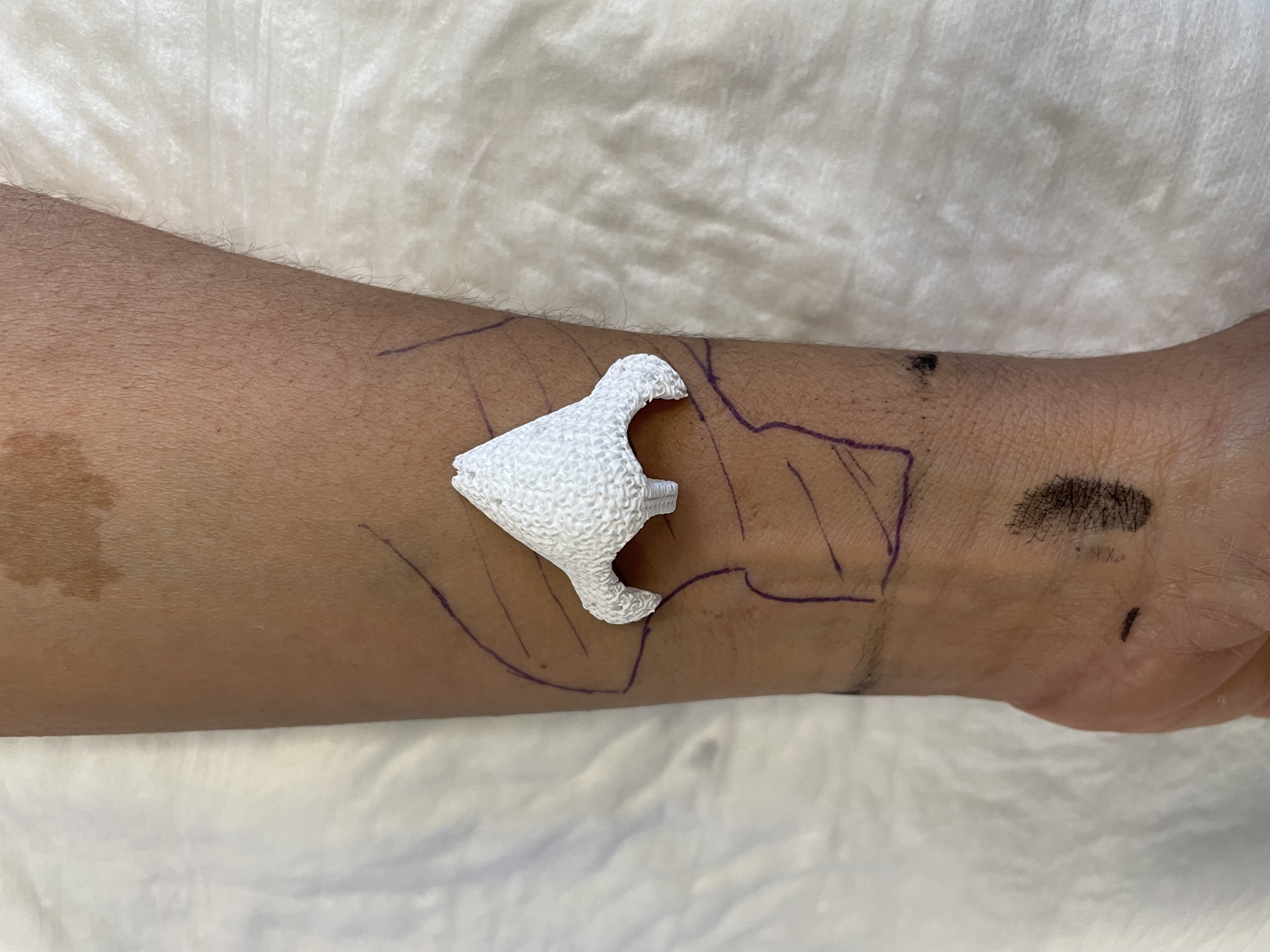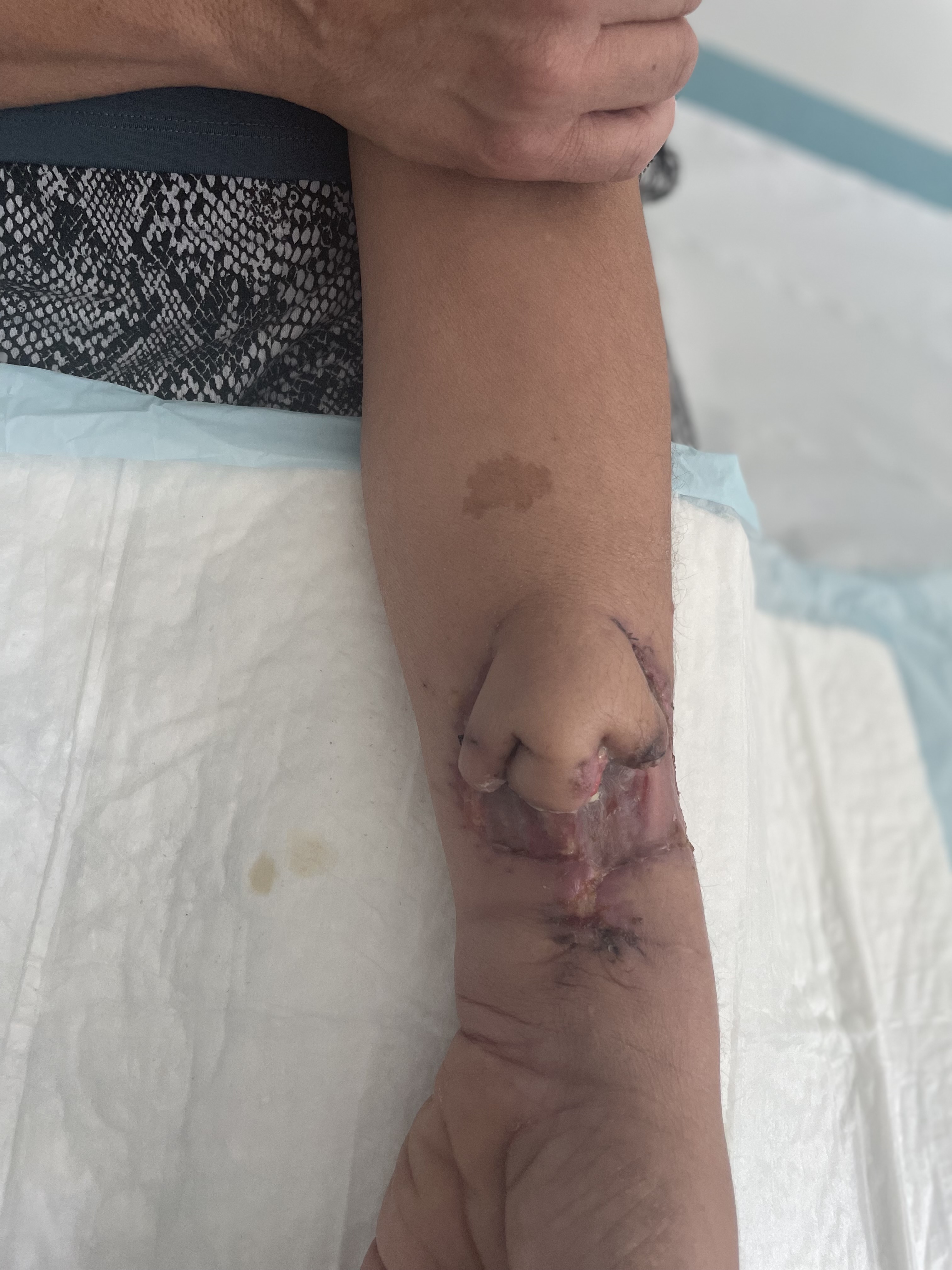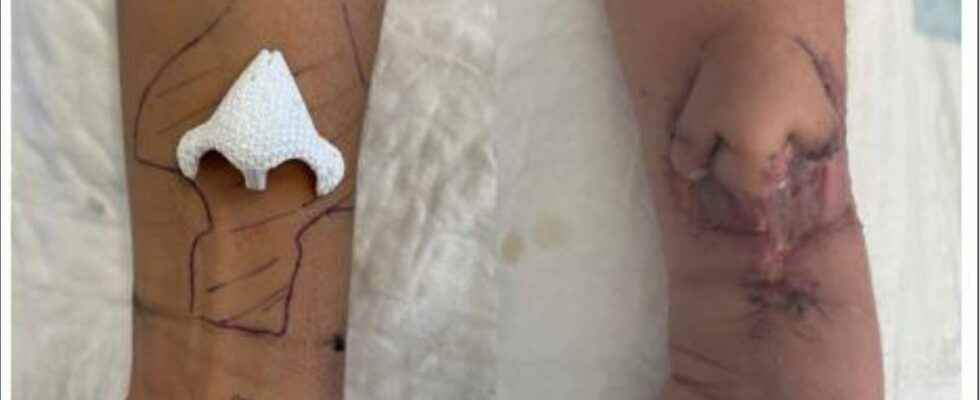Published on
Updated
Reading 2 mins.
Nine years after cancer of the nasal cavities, a patient from the Toulouse Oncopole was able to benefit from a completely innovative technique: the reconstruction of her new nose on her forearm using a 3D printed biomaterial.
The ENT and Cervico-Facial surgery teams of the Toulouse University Hospital and the Claudius Regaud Institute have achieved a real feat: the total reconstruction of a patient’s nose from a synthetic graft previously implanted in her forearm. A tailor-made intervention made possible by state-of-the-art technology.
A last resort solution thanks to biomaterials
According to the hospital statement, the patient was treated in 2013 for nasal cavity cancer (squamous cell carcinoma) with radiotherapy and chemotherapy. As a result of this treatment, she had lost a large part of her nose as well as the front part of her palate. For years, the patient lived without a nose, “faced with nasal reconstruction failures by grafting skin flaps and with difficulty supporting the wearing of a facial prosthesis”.
“I have been cloistered at home for the past eight years. When you are sick, you isolate yourself and the face is what you see first”says this 50-year-old Tarnaise in 20 minutes.
His doctors then think of a totally innovative intervention: a complete nasal reconstruction thanks to a 3D printed biomaterial. This custom-made device is made by the Belgian company Cerhum, based on scans taken before the patient’s cancer treatment. However, this type of reconstruction had never been performed on such a fragile and poorly vascularized area.

A “nursing” placement on the forearm
Once made of hydroxyapatite, the prosthesis is implanted, put in nurse, last July on the forearm of the patient, where the skin is very thin and resembles that of the face. The patient then goes to the hospital regularly to check the good vascularization of the area.

In September 2022, two months after fostering, colonization of the medical device appeared complete. “The device was thus able to be transplanted in the nasal region and successfully revascularized using microsurgery by anastomoses (creation of a connection between blood vessels) of the vessels of the skin of the arm on the vessels of the temple of the patient” announces the hospital adding that after ten days of hospitalization and three weeks of antibiotics, the patient is doing very well. For her part, the 50-year-old woman does not hide her enthusiasm:
“I also find the smells of my garden, I can go out, I live again”
